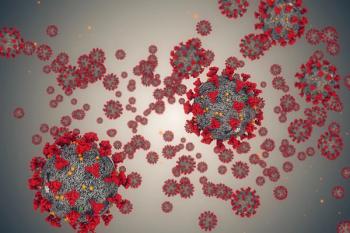
What Is Interstitial Lung Disease?
A comprehensive overview of interstitial lung disease that covers identification, potential causes, risk factors, and subsets of disease.
Transcript
Neil B. Minkoff, MD: Today we are discussing patient management of chronic fibrosing interstitial lung disease with progressive phenotype. I’m Dr Neil Minkoff, the chief medical officer of Coeus Consulting Group. Joining me today in this virtual discussion are Sonye Danoff from Johns Hopkins Medicine, who works in pulmonary and critical care; Laura Hummer, from the Johns Hopkins division of rheumatology; Justin Michael Oldham, from the UC Davis Health division of pulmonary critical care and sleep medicine; and Ms. Dawn Repola, who will be representing our patients.
Chronic fibrosing interstitial lung disease with progressive phenotype, is a serious pulmonary disorder that can impact patients with significant morbidity and mortality. With an ever-changing landscape for management of chronic fibrosing ILD [interstitial lung disease] with progressive phenotype, it is critical that clinicians are educated on all aspects of these disorders. Today we’re going to discuss new pathways for improving patient management and optimizing overall outcomes.
What exactly is interstitial lung disease? What makes idiopathic pulmonary fibrosis, and what percentages of these patients have chronic fibrosis ILD with progressive phenotype?
Sonye Danoff, MD, PhD: The interstitial lung diseases are a group of heterogeneous disorders. We refer to them by a single-name interstitial lung disease, but there are many different causes of this process. One thing they have in common is the presence of inflammation or fibrosis that affects the distal airways and impacts the relationship between the air spaces and the alveolar capillary beds. Because of this it causes [lung stiffness], decreased compliance in the lining, and a decrease in the capacity for diffusion of oxygen. We can determine patients who have interstitial lung disease through a number of methods. Often they’ll present with symptoms of shortness of breath and cough or fatigue. We can identify the diagnosis through a combination of imaging studies, chest CT [computed tomography] scans, as well as pulmonary function testing. Once we’ve found a general topic of interstitial lung disease, we want to look at the etiology of the disease. Why has it happened? This field has changed over the last decade. The description of different forms of interstitial lung disease largely depended on surgical lung biopsies and was based on the pathology that was seen on the surgical lung biopsies. Over the past decade we’ve appreciated that CT scanning gives us a tremendous amount of information about the patterns of lung injury. We want to look at why the lung injury has happened. Idiopathic pulmonary fibrosis is just 1 of the categories of interstitial lung disease. It’s a category that we typically see in an older-male population, often among men who have smoked earlier in their lives. We call it idiopathic because it seems to occur within itself. We don’t believe there is a triggering factor like an exposure to a medication or an autoimmune disease or something else that causes it. We know there are genetic risk factors for the development of interstitial lung disease and for idiopathic pulmonary fibrosis. One thing that has changed over the last decade, in addition to moving away from surgical biopsies toward imaging and looking more at the etiology of disease, is thinking more about how these diseases behave over time. Traditionally we have thought of every single patient who had autoimmune-associated ILD as being the same. But now we realize that, within that category of patients who have autoimmune-associated ILD, some of them respond nicely to immunosuppressive medications and have a reversible process or are able to be stabilized. Unfortunately, even within the category, which is quite treatable in general, there are a small number of patients who don’t behave that way. These patients tend to have a progressive phenotype where they develop worsening of their lung disease and have worsening of their imaging findings and loss of pulmonary function in testing. Their ILD is a big category; within it there are many etiologies. Even within the etiology, there are many behaviors, things that get better, and things that stay stable and progress.
Justin Michael Oldham, MD, MS: That’s a great description. ILD has been an umbrella term for a long time, we thought that we should be parsing them into boxes: the autoimmune, the idiopathic, the drug induced. More recently there have been changes in thinking that perhaps we should just be viewing this progressive phenotype as the same underlying biology and mechanism.
Newsletter
Stay ahead of policy, cost, and value—subscribe to AJMC for expert insights at the intersection of clinical care and health economics.







































